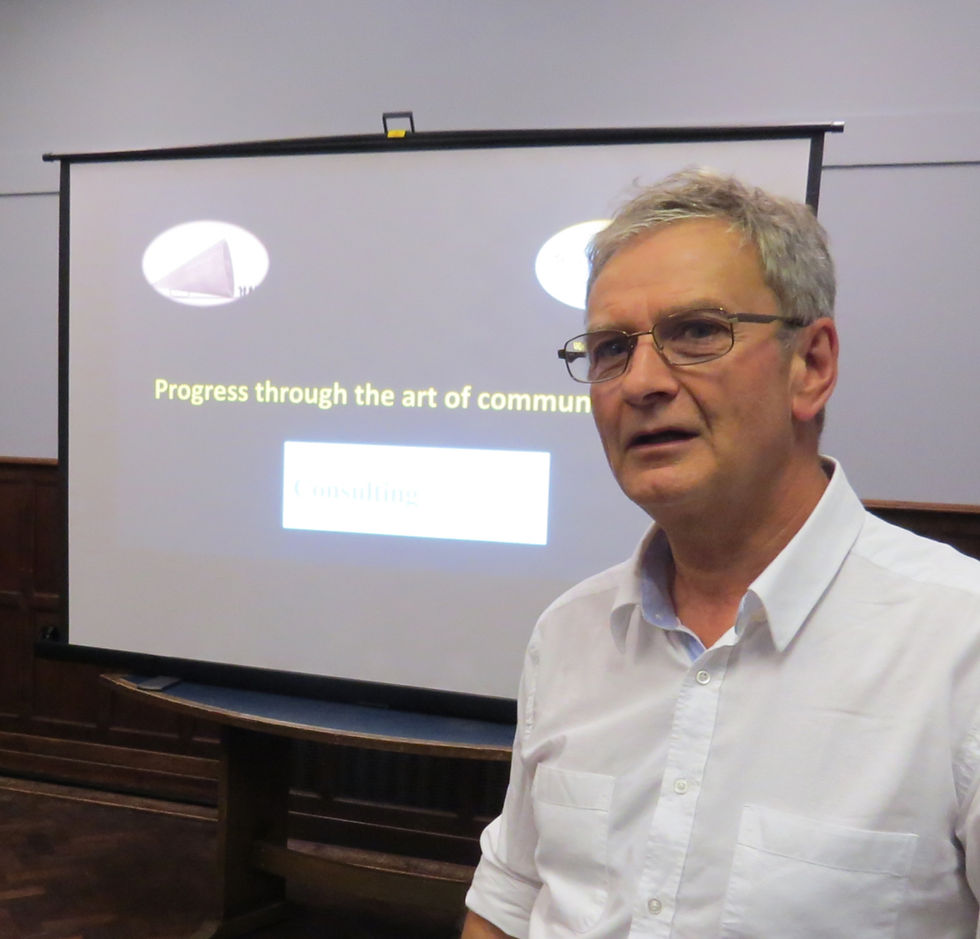Public Speaking
Death by PowerPoint frequently appears to be criticized by skilled communicators. Some hate using the medium, and of course, many more love PowerPoint. Of course, it is not the only medium for creating visual material. For those of us who love Microsoft, PowerPoint makes sense. This article is for all readers, not just professionals, and is applicable to all speaker sessions, whether socially or in business.
Why is PowerPoint hated?
Well, it is simple. Good speakers feel that PowerPoint makes people lazy, leading to a lack of being prepared. I thought it was a good topic, as conference season is starting to warm up for some. Preparation is everything, and of course, your talk will look better for those slides. I am a strong proponent of PowerPoint, but I have to say that it is used more poorly than well. In preparing this short article, I have adopted the term Death by PowerPoint because it really can kill what could be a good talk. A few tips might not go amiss.

a title
introduction
main content
summary or conclusion
Five Tips
Have you ever sat in a talk where each slide is filled with writing or where the image is packed with too many illustrations? Here are five tips to improve and achieve a better result. Some of these tips form golden rules; others are based on recommendations passed down by experienced speakers.
1. Your slide presentation is not your talk or lecture; you are. Know your content if the slide programme went down accidentally.
For many, writing details onto a slide is a false idea of value. It may help the speaker who proceeds to read his or her slide but sends the audience to sleep. This is an absolute don't go there rule.
My Talk
My first meal of the day is breakfast with coffee
My second meal of the day is a light lunch with sandwiches
My third meal of the day is dinner, and I have three courses and a drink
Supper consists of a hot chocolate and biscuit
Oops, that’s a scary thought. I need my slides so I know where I am! No problem. Make up some cards so that you have aid. This will keep order but make the cards brief. You can also place notes under the slide when planning. The audience won't see these, no matter how detailed they are.
My Talk
Division of a day
Difference between nutrition
Value of drinks
The talk looks different now as the speaker is breaking the content into three clear sections and can develop each separately. The audience knows where he or she is heading - the talk is about diet and quality food and drink.
Next - how many words and sentences can I use?
2. Writing on a slide should ideally be minimal. The rule of FIVE is five maximum words per line and five maximum lines per slide, i.e. 25 tops.
The title slide is not always required. Rule of FIVE: Even in this example, the words could be pruned down to 1-3 words per line.
A balanced diet with exercise
Muscles & joints
Cardio exercise
Equipment
Timetable
The eye cannot take on more information than this. Therefore, do not use your slide as your talk. Instead, use the animation option to bring one line down at a time if you must use more. The audience will always read the slide, take their eye off you, and stop listening momentarily.
3. Use no more illustrations than necessary. The ideal is a single picture that fills the screen in a high-quality format. Avoid transitions—those attributes that make the picture move. Instead, keep the picture simple to help visibility and prevent the audience from becoming distracted. If you use transitions, try to use the same style throughout rather than mixing these up.
All illustrations need to be valuable, enhance the talk, and ideally support your words and, in some cases, replace words.
Remember, “a picture is worth a thousand words!”
4. Never read from your slides. You should know them well enough to help your audience engage with your words. Your voice is essential, and it must be used to engage your audience. Every time you look away from the audience, your voice (sound) diminishes or, worse, becomes lost. Talk naturally and learn the order rather than the words.
Practice – practice – practice, then your talk will look more professional
But I need to read the slides as I don’t remember my talk.
Modern conferences have a console screen so that you can look down rather than toward the screen. PowerPoint offers the next screen view as well, and you can put notes at the bottom of your slide so that only you will see them.
5. I have a 20-minute slot, so 20 slides should be fine.
Don’t confuse the number of slides with quality. Less is more, as they say. You could have 50 slides for a 20-minute slot if you were experienced and wanted to make a movie. Time your talk three times and check if one or more slides will push you over your time. Remove anything that is extraneous and of little value. Keep slides that offer the best value, i.e. allow visual understanding of a complex concept and get the message across succinctly.
A slide programme or slide deck can help design a talk but must never be the talk.
Flesh out the title, introduction, main content, and conclusion. Make sure it flows and connects. As a guide, keep the subject to one central theme and perhaps up to three sub-themes. Remove any slide that slows or lengthens the talk. Above all, keep to time.
Good luck with your presentation, be it 10 minutes or longer. Shorter talks are often the most difficult to design and deliver, while 25-30-minute talks are perfect. Longer speeches can turn the audience ‘off ‘unless the talk is vital to information needs, i.e. examination preparation. Our aim should be to keep our audience with PowerPoint, not make them want to curl up and feel ‘dead’ if one more heavily packed slide is shown!
Talks, Lectures, Speeches and Peroration
TED talk
TED stands for technology, entertainment, and design, and it was created in 1987 by Richard Wurman in the USA. There are books on TED talks and TED slides, and they follow some of the five tips above. The fundamentals of TED explained. The timing of the TED talk is critical and usually involves one theme and one message. I use Greta Thunberg as an example of delivering a simple message to a worldwide audience. Whether you like her and her theme does not matter. I admire her for the presentation. There is an emerging trend where conferences include keynote speakers as well as a group of short talks. Many people asked to submit do so with a strict time limit of 10 minutes. This is pretty short and takes longer to prepare than a 25-minute talk! How so? Well, timing is critical, and that message must be clear and unburdened with any side plots or discussion. Let's say you want to tell a funny joke or anecdote. You must be pretty sure that it fits, is relevant, and does not move the audience away from the theme. Shorter talks, in my view, are pointless at a conference, but they can still be used intelligently if necessary. Another trend has been to limit slides.
The rationale is to stop Death by PowerPoint!
I have probably made every mistake in the book! I was never formally taught how to speak, and when starting, PowerPoint or electronic systems were not available.
How to project your image through talking takes the inexperienced novice through the process.
The second book covers PowerPoint in detail to allow anyone to navigate how to work the system for the best. I never stop learning and love to embrace new technology, but I also love to share my own experiences. I hope you gain value from these two books available from Amazon. The PowerPoint book 'PowerPoint is more than a slide program' and is not available as an ebook. There are heaps more tips and information for those who wish to better themselves in these illustrated books.

The author was an experienced lecturer who worked at several colleges and universities during his forty-year career. Although the books above guide novices, this article may be best understood with prior knowledge of PowerPoint. You will find more advice online and find plenty of YouTube discussions.

Thanks for reading this article covering the basics behind giving a talk with PowerPoint or similar aid.

コメント